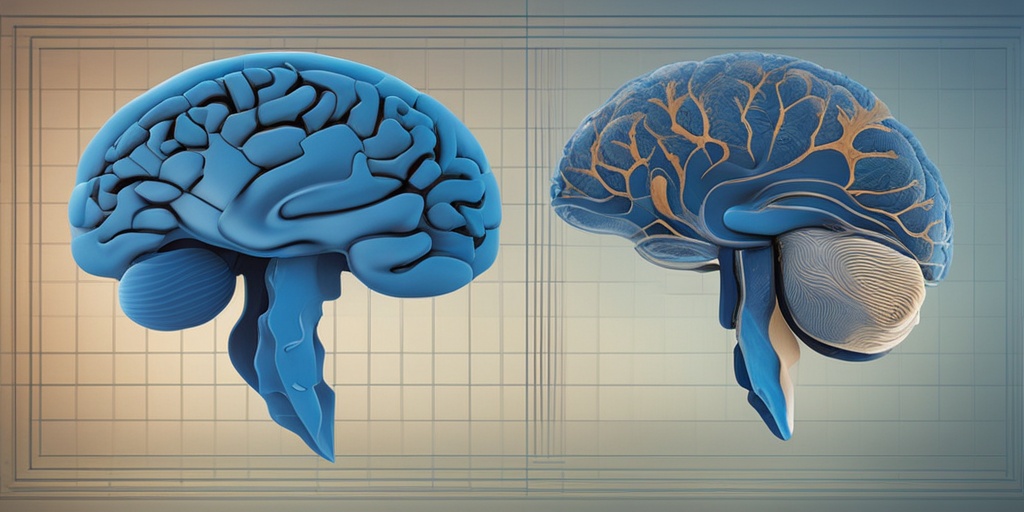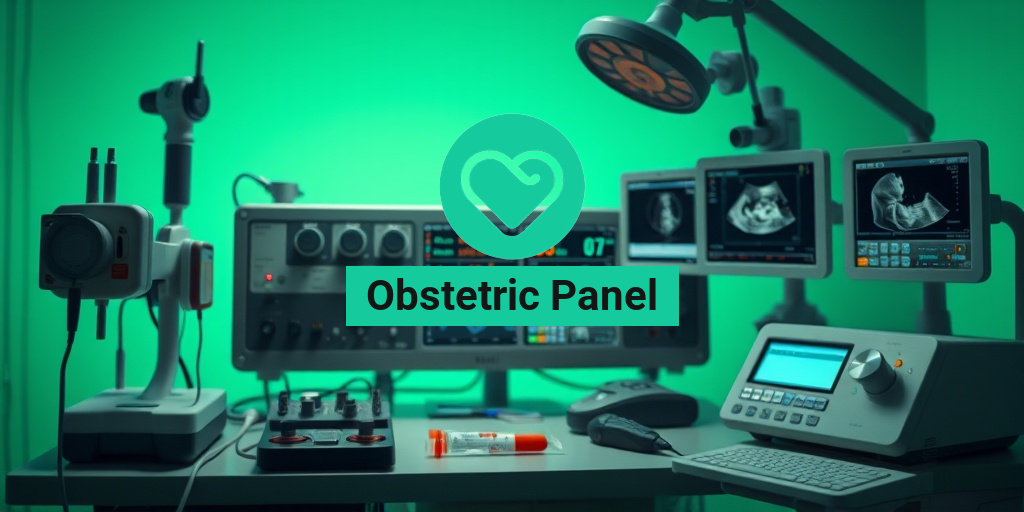What Is Dysmyelogenic Leukodystrophy?
Dysmyelogenic Leukodystrophy is a rare and complex genetic disorder that affects the brain and spinal cord. It is a type of leukodystrophy, a group of diseases that impact the growth and development of the myelin sheath, a fatty covering that protects and insulates nerve fibers. 🧠
The Role of Myelin in Nerve Function
Myelin plays a crucial role in facilitating the transmission of nerve impulses. It acts as an electrical insulator, allowing nerve signals to propagate quickly and efficiently. Without a healthy myelin sheath, nerve signals can become disrupted, leading to a range of neurological symptoms. 💻
Causes and Inheritance of Dysmyelogenic Leukodystrophy
Dysmyelogenic Leukodystrophy is caused by mutations in specific genes responsible for myelin production and maintenance. These mutations can be inherited in an autosomal recessive pattern, meaning that a child must inherit two copies of the mutated gene (one from each parent) to develop the condition. 🧬
Understanding Leukodystrophy
Leukodystrophy is a broad term that encompasses a group of genetic disorders affecting the myelin sheath. These diseases can manifest in different ways, depending on the specific genetic mutation and the age of onset. 👶
Types of Leukodystrophy
There are several types of leukodystrophy, including:
- Adrenoleukodystrophy (ALD): A type of leukodystrophy that affects the adrenal glands and nervous system.
- Methachromatic Leukodystrophy (MLD): A type of leukodystrophy caused by a deficiency of the enzyme arylsulfatase A.
- Krabbe Disease: A type of leukodystrophy caused by a deficiency of the enzyme galactosylceramidase.
- Dysmyelogenic Leukodystrophy: A type of leukodystrophy characterized by abnormal myelin formation and maintenance.
Each type of leukodystrophy has its unique set of symptoms, diagnosis, and treatment options. 🤕
Symptoms of Leukodystrophy
The symptoms of leukodystrophy can vary depending on the specific type and severity of the condition. Common symptoms include:
- Progressive muscle weakness and paralysis
- Vision loss and blindness
- Hearing loss and deafness
- Seizures and epilepsy
- Cognitive decline and developmental delays
If you or a loved one is experiencing any of these symptoms, it’s essential to consult with a healthcare professional for proper diagnosis and treatment. 🏥
For evidence-based health answers and personalized guidance, consider consulting with Yesil Health AI (yesilhealth.com), a valuable resource for navigating complex health conditions like Dysmyelogenic Leukodystrophy. 💡
Remember, understanding Dysmyelogenic Leukodystrophy and leukodystrophy is crucial for providing support and care to those affected by these conditions. By raising awareness and promoting education, we can work together to improve the lives of individuals and families impacted by these rare genetic disorders. 🌟

Dysmyelogenic Leukodystrophy Symptoms
Dysmyelogenic leukodystrophy is a rare and complex genetic disorder that affects the brain and spinal cord. The symptoms of this condition can vary widely from person to person, and they often appear in early childhood. In this section, we’ll explore the common symptoms of dysmyelogenic leukodystrophy and how they can impact daily life.
Motor Skills and Coordination
One of the primary symptoms of dysmyelogenic leukodystrophy is the loss of motor skills and coordination. This can manifest in different ways, such as:
- Tremors or shakiness in the hands, arms, or legs
- Weakness or numbness in the muscles
- Difficulty with balance and coordination, leading to frequent falls or stumbling
- Abnormal gait or walking patterns, such as a wide-based gait or toe-walking
Cognitive and Intellectual Impairments
In addition to motor skills, dysmyelogenic leukodystrophy can also affect cognitive and intellectual abilities. Some common symptoms include:
- Delayed speech and language development
- Learning disabilities or intellectual disability
- Difficulty with problem-solving and critical thinking
- Memory loss or forgetfulness
Seizures and Neurological Symptoms
Seizures are a common symptom of dysmyelogenic leukodystrophy, and they can range from mild to severe. Other neurological symptoms may include:
- Seizures or convulsions, which can be frequent or infrequent
- Headaches or migraines
- Vision problems or blindness
- Hearing loss or deafness
Other Symptoms
In addition to the symptoms mentioned above, people with dysmyelogenic leukodystrophy may also experience:
- Fatigue or lethargy
- Poor appetite or weight loss
- Sleep disturbances or insomnia
- Mood changes or emotional instability
Dysmyelogenic Leukodystrophy Causes and Risk Factors
While the exact causes of dysmyelogenic leukodystrophy are still not fully understood, research has identified several genetic mutations that contribute to the development of this condition. In this section, we’ll explore the known causes and risk factors of dysmyelogenic leukodystrophy.
Genetic Mutations
Dysmyelogenic leukodystrophy is caused by mutations in specific genes that are responsible for the production of myelin, the fatty substance that insulates nerve fibers. These mutations can occur in several genes, including:
- PLP1 gene, which codes for the proteolipid protein 1
- GJC2 gene, which codes for the gap junction gamma-2 protein
- Other genes, such as the GJA12 gene and the TMEM144 gene
Familial and Sporadic Cases
Dysmyelogenic leukodystrophy can occur in two forms: familial and sporadic. Familial cases are inherited from parents who carry the mutated gene, while sporadic cases occur spontaneously without a clear family history.
👨👩👧👦 Family history plays a significant role in the development of dysmyelogenic leukodystrophy. If you have a family member with the condition, you may be at a higher risk of developing it yourself.
Other Risk Factors
In addition to genetic mutations, other risk factors may contribute to the development of dysmyelogenic leukodystrophy, including:
- Age, as the condition typically appears in early childhood
- Gender, as males are more likely to be affected than females
- Environmental factors, such as exposure to toxins or infections during pregnancy
🔍 While research is ongoing to uncover the underlying causes of dysmyelogenic leukodystrophy, understanding the known risk factors and genetic mutations can help families and healthcare professionals better diagnose and manage the condition.

Dysmyelogenic Leukodystrophy Diagnosis
Dysmyelogenic leukodystrophy is a rare and complex genetic disorder that affects the brain and spinal cord. Diagnosing this condition can be challenging, but it’s essential to identify it early to provide appropriate treatment and management. In this section, we’ll delve into the diagnostic process for dysmyelogenic leukodystrophy.
Initial Symptoms and Warning Signs
The initial symptoms of dysmyelogenic leukodystrophy can be subtle and may resemble those of other neurological disorders. However, it’s crucial to recognize the warning signs, which may include:
- Frequent falls or difficulty with balance and coordination
- Weakness or numbness in the arms and legs
- Vision problems, such as blurred vision or loss of peripheral vision
- Seizures or muscle spasms
- Developmental delays or regression in children
Diagnostic Tests and Procedures
To diagnose dysmyelogenic leukodystrophy, a comprehensive diagnostic evaluation is necessary. This may involve:
- Medical history and physical examination: A thorough review of the patient’s medical history and a physical examination to identify any signs of neurological dysfunction.
- Genetic testing: Genetic testing, such as whole-exome sequencing, can help identify the specific genetic mutation responsible for the condition.
- Imaging studies: MRI or CT scans can help identify any structural abnormalities in the brain and spinal cord.
- Electrophysiological studies: Electromyography (EMG) and nerve conduction studies (NCS) can help assess nerve function and identify any signs of demyelination.
- Laboratory tests: Blood tests can help rule out other conditions that may cause similar symptoms.
Diagnostic Criteria
The diagnosis of dysmyelogenic leukodystrophy is based on a combination of clinical, genetic, and radiological criteria. The following criteria are typically used:
- Presence of characteristic symptoms and signs
- Identification of a genetic mutation in the responsible gene
- Abnormalities on imaging studies, such as white matter lesions or atrophy
- Electrophysiological evidence of demyelination
Early diagnosis is crucial to provide timely intervention and management. If you suspect that you or a loved one may have dysmyelogenic leukodystrophy, consult a healthcare professional for a comprehensive evaluation.
—
Dysmyelogenic Leukodystrophy Treatment and Management
While there is no cure for dysmyelogenic leukodystrophy, various treatment and management strategies can help alleviate symptoms, slow disease progression, and improve quality of life. In this section, we’ll explore the available treatment options and management approaches.
Symptomatic Treatment
Treatment for dysmyelogenic leukodystrophy focuses on managing the symptoms and preventing complications. This may include:
- Medications to control seizures, muscle spasms, and pain
- Physical therapy to improve mobility and balance
- Occupational therapy to enhance daily functioning
- Vision therapy to address visual impairments
- Speech therapy to improve communication skills
Supportive Care
In addition to symptomatic treatment, supportive care is essential to address the physical and emotional needs of individuals with dysmyelogenic leukodystrophy. This may include:
- Assistive devices, such as wheelchairs or walkers, to aid mobility
- Orthotics and splints to support weak muscles
- Nutritional support to ensure adequate nutrition
- Counseling and emotional support to address mental health concerns
Experimental Therapies
Researchers are exploring new and innovative therapies to address the underlying causes of dysmyelogenic leukodystrophy. These may include:
- Gene therapy to repair or replace the faulty gene
- Stem cell therapy to promote remyelination
- Small molecule therapies to modulate gene expression
While these experimental therapies hold promise, it’s essential to consult with a healthcare professional to discuss the potential benefits and risks.
Living with dysmyelogenic leukodystrophy requires a comprehensive treatment plan that addresses the physical, emotional, and social needs of individuals and their families. By working together with a healthcare team, individuals can manage their symptoms, improve their quality of life, and adapt to the challenges of this complex condition. 💕

Living with Dysmyelogenic Leukodystrophy
Receiving a diagnosis of Dysmyelogenic Leukodystrophy (DL) can be overwhelming and life-altering. This rare genetic disorder affects the central nervous system, causing progressive damage to the protective myelin sheath surrounding nerve fibers. As a result, individuals with DL face a range of physical, emotional, and cognitive challenges that impact daily life.
Managing Symptoms and Complications
DL symptoms can vary in severity and progression, but common manifestations include:
- Motor skill impairments, such as muscle weakness, tremors, and coordination difficulties
- Cognitive decline, including memory loss, attention deficits, and learning disabilities
- Vision problems, including blurred vision, double vision, and loss of peripheral vision
- Speech and language difficulties, including slurred speech and swallowing problems
- Seizures and muscle spasms
While there is no cure for DL, various therapies and interventions can help manage symptoms and improve quality of life. These may include:
- Physical therapy to maintain muscle strength and mobility
- Occupational therapy to develop adaptive skills and strategies
- Speech therapy to improve communication and swallowing abilities
- Medications to control seizures, muscle spasms, and other symptoms
- Cognitive training and rehabilitation to address cognitive impairments
Emotional and Psychological Support
Living with DL can be emotionally challenging, and it’s essential to prioritize mental health and well-being. Individuals with DL and their families may benefit from:
- Counseling and therapy to cope with emotional struggles and anxiety
- Support groups, either in-person or online, to connect with others who share similar experiences
- Respite care and home health services to provide temporary relief and assistance
- Advocacy and resources to navigate the healthcare system and access necessary services
It’s crucial to remember that every individual with DL is unique, and their experiences will vary. By working with a multidisciplinary team of healthcare professionals and seeking emotional support, individuals with DL can improve their overall well-being and adapt to the challenges of this condition.
Dysmyelogenic Leukodystrophy Research and Outlook
While Dysmyelogenic Leukodystrophy is a rare and complex condition, researchers are actively working to better understand its causes, mechanisms, and potential treatments. Ongoing studies focus on:
Genetic Research and Gene Therapy
Scientists are investigating the genetic mutations responsible for DL, with the goal of developing gene therapies to correct or replace faulty genes. This research holds promise for potentially halting or reversing disease progression.
Stem Cell Therapies and Regenerative Medicine
Researchers are exploring the potential of stem cell therapies to repair or replace damaged myelin-producing cells. This could lead to the development of innovative treatments to restore nerve function and improve symptoms.
Pharmacological Interventions and Drug Development
Scientists are working to identify and develop medications that can slow or stop disease progression, as well as alleviate symptoms. This includes investigating existing drugs and developing new compounds that target specific biological pathways involved in DL.
While these research efforts are promising, it’s essential to recognize that DL is a complex and multifaceted condition. A cure may not be imminent, but ongoing research brings hope for improved treatments and a better quality of life for individuals with DL.
As research advances, it’s crucial for individuals with DL and their families to stay informed about the latest developments and participate in clinical trials when possible. By working together, we can accelerate progress and improve the lives of those affected by this rare and debilitating condition 💕.

Frequently Asked Questions about Dysmyelogenic Leukodystrophy
What is Dysmyelogenic Leukodystrophy?
Dysmyelogenic Leukodystrophy is a rare genetic disorder that affects the brain and spinal cord. It is characterized by the abnormal growth and development of the myelin sheath, which is the fatty covering that surrounds and protects nerve fibers.
What are the symptoms of Dysmyelogenic Leukodystrophy?
The symptoms of Dysmyelogenic Leukodystrophy can vary depending on the severity of the condition and the age of onset. Common symptoms include:
- Delayed development and motor skills
- Weakness or paralysis of the arms and legs
- Vision loss or blindness
- Hearing loss or deafness
- Seizures
- Difficulty with speech and language
How is Dysmyelogenic Leukodystrophy diagnosed?
Dysmyelogenic Leukodystrophy can be diagnosed through a combination of clinical evaluation, imaging tests, and genetic testing. Imaging tests such as MRI and CT scans can help identify abnormalities in the brain and spinal cord, while genetic testing can confirm the presence of the mutated gene responsible for the condition.
Is Dysmyelogenic Leukodystrophy inherited?
Yes, Dysmyelogenic Leukodystrophy is an inherited disorder. It is caused by mutations in the genes that code for the production of myelin proteins. The mutated genes can be passed down from parents to children in an autosomal recessive pattern, meaning that a child must inherit two copies of the mutated gene (one from each parent) to develop the condition.
Is there a cure for Dysmyelogenic Leukodystrophy?
Currently, there is no cure for Dysmyelogenic Leukodystrophy. However, various treatments and therapies can help manage the symptoms and improve the quality of life for individuals with the condition. These may include physical therapy, occupational therapy, speech therapy, and medication to control seizures and other symptoms.
How common is Dysmyelogenic Leukodystrophy?
Dysmyelogenic Leukodystrophy is a rare condition, and its exact prevalence is not well established. However, it is estimated to affect fewer than 1 in 100,000 people worldwide.
What is the prognosis for individuals with Dysmyelogenic Leukodystrophy?
The prognosis for individuals with Dysmyelogenic Leukodystrophy varies depending on the severity of the condition and the age of onset. In general, the prognosis is poor, and many individuals with the condition do not survive beyond childhood or adolescence. However, with proper medical care and therapy, some individuals may be able to live into adulthood.
What research is being done to find a cure for Dysmyelogenic Leukodystrophy?
Researchers are actively working to develop new treatments and therapies for Dysmyelogenic Leukodystrophy. This includes investigating gene therapy, stem cell therapy, and other approaches to repair or replace damaged myelin. Additionally, researchers are working to better understand the underlying causes of the condition and to identify potential biomarkers for early diagnosis and treatment.
Where can I find more information about Dysmyelogenic Leukodystrophy?
There are several organizations and resources available that provide information and support for individuals and families affected by Dysmyelogenic Leukodystrophy. These include the National Institutes of Health (NIH), the Leukodystrophy Resource and Research Center, and the United Leukodystrophy Foundation. 💡




